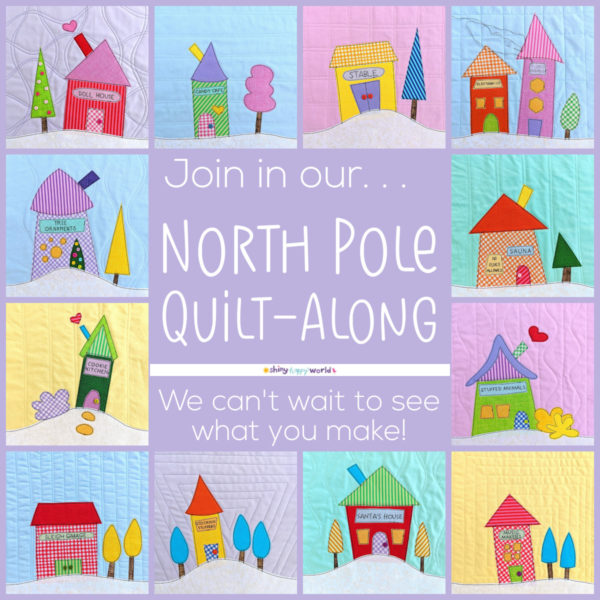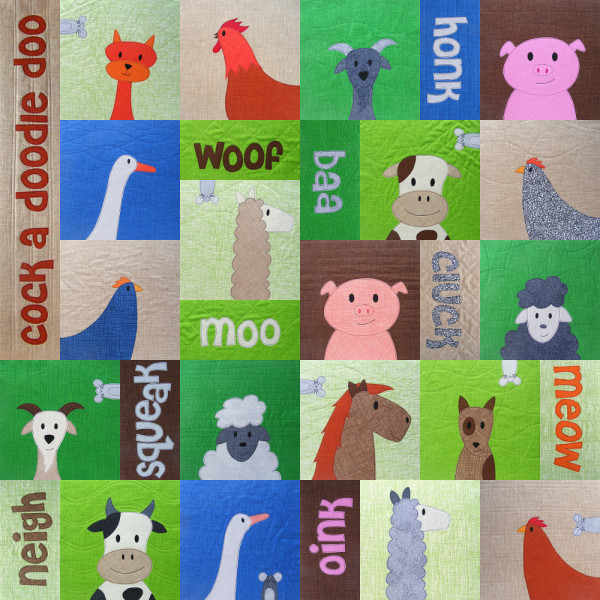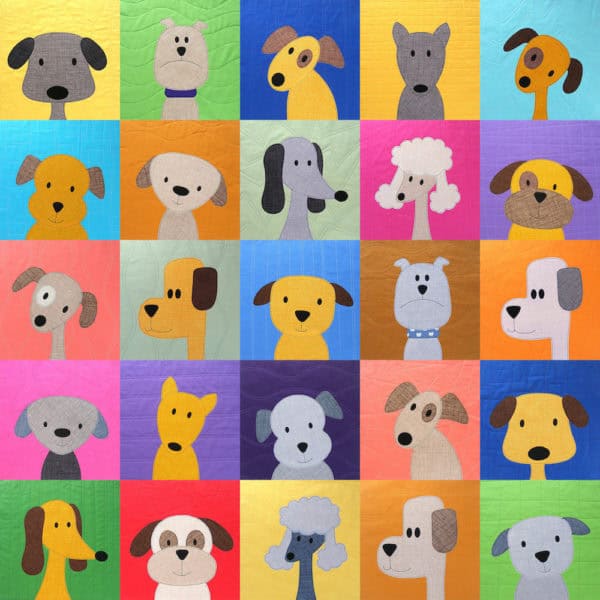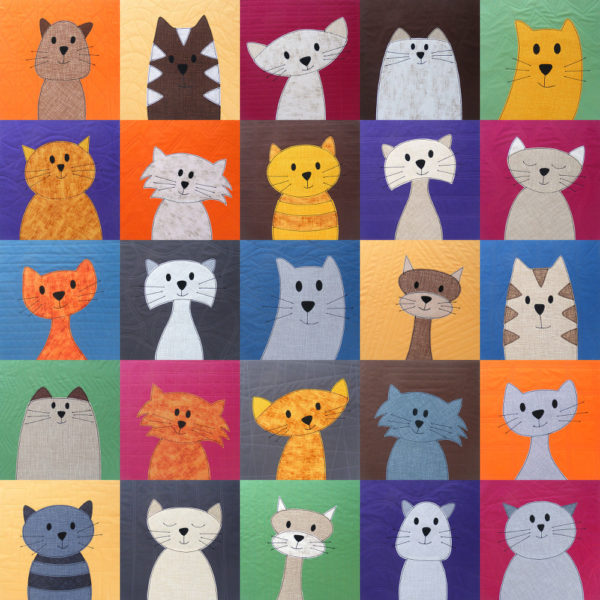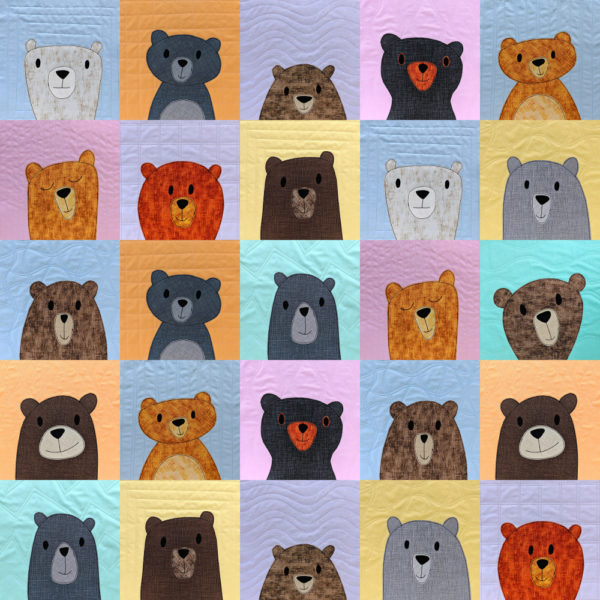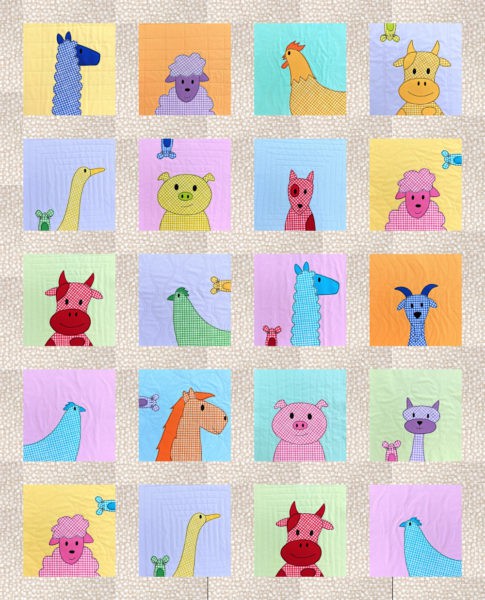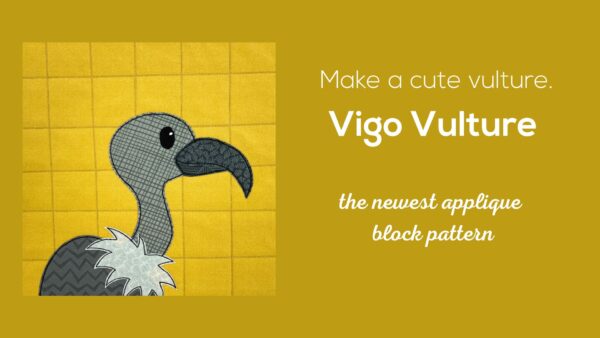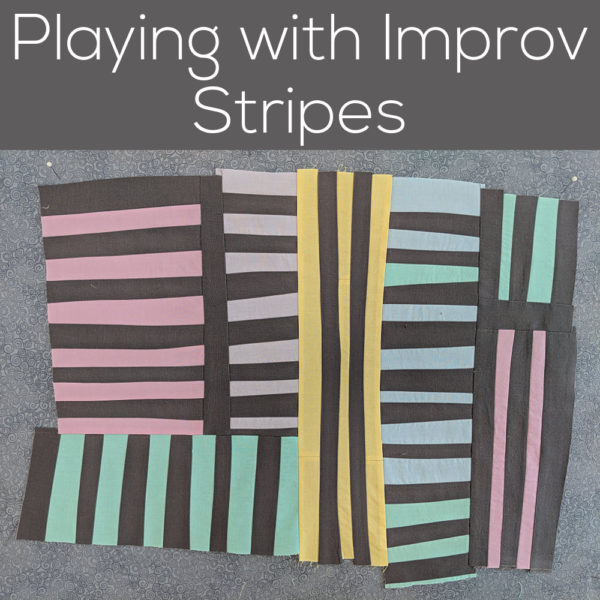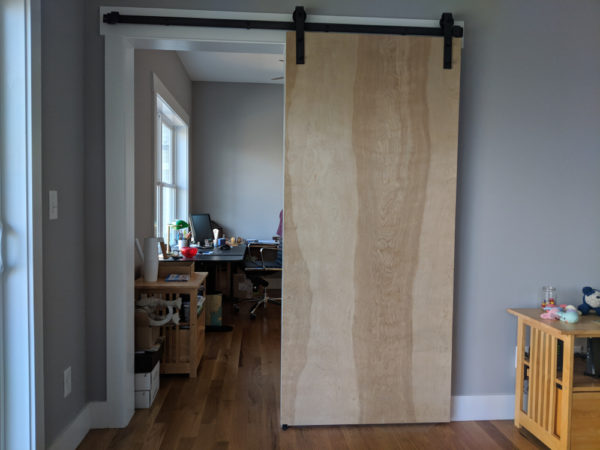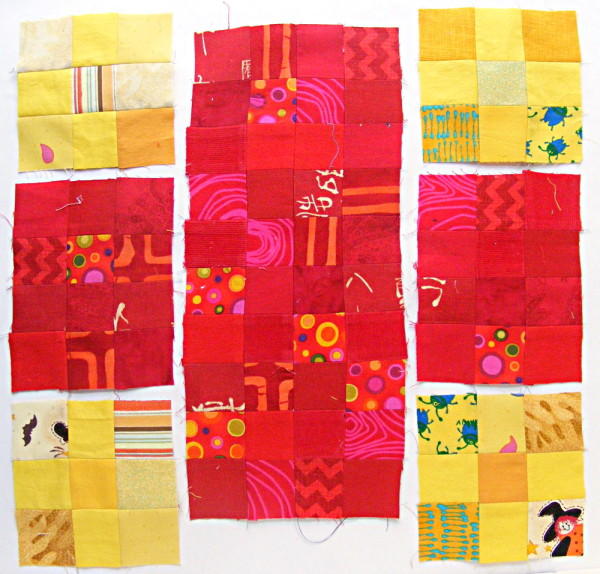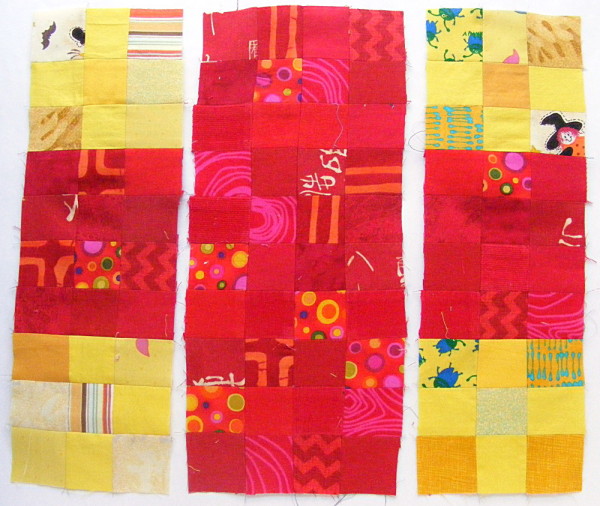
Here’s where things stand right now on Jo’s T-shirt quilt. I’ve fused the interfacing and cut images from all the T-shirts in the stack, and I’ve got finished, framed blocks for eight of them.
I wrote about the tools and supplies I’m using for this quilt here.
And I wrote about the hows and whys of the interfacing here.
Today I’ll show you how I’m framing the images to make uniform blocks.
The shirts I’m using in this quilt range from children’s XS to men’s XL. That, my friends, is a big range of sizes.
There are some amazingly complex T-shirt quilts out there that fit all those sizes together like a jigsaw puzzle. You can see some of them in this Pinterest board I’ve been building.
Frankly – the thought of planning that out made my head hurt. And then the cutting and piecing would have to be really precise and I would be quickly getting far away from the kind of quilts I like to make.
(One of the things I’m most eager to hear in Diane Gilleland’s class about T-shirt quilts is how she plans the layouts. Her T-shirt quilts have a lovely harmony and simplicity to them, and I can’t figure out how she does it just by seeing the finished quilts. I can’t wait to learn more about her approach! RSVP for the free video workshop happening on August 21 and 22 and take the class with me!)
Until I learn Diane’s magic secret – I decided to keep things simple.
1. I already own a 15 inch square ruler – so all the blocks will be 15 inch square blocks. Easy.
2. I cut the T-shirt images whatever size works best for the image. Then I add fabric around the image until it’s bigger than 15 inches. Then I use that handy-dandy ruler to trim it to the exact right size.
Today I’m going to show how I do that framing.
Here’s where we left off in the interfacing post.

The T-shirt has interfacing fused to the back and it’s trimmed where I like it.
I hit my stash and pulled some blue that very closely matched the blue of the T-shirt.
My original plan was to use contrasting fabric for the frame – like pulling out the green of her tail or the orange of her hair – but in the end I decided that would be too busy. I want the focus to be on the T-shirt images, so my frames add a bit of extra texture (none of them are solids) without adding additional color.
I added strips all the way around the image until the block was bigger than 15 inches. I added strips to the top and bottom first, then pressed it and added strips to the two sides and pressed again.
You can add to the sides first and then the top and bottom. Or you can work your way around the block log-cabin-style. It doesn’t really matter – just get fabric on all four sides.
Press all your seams away from the T-shirt center. And press everything from the back so you don’t smear your image!

Here’s the framed block with my 15 inch ruler set on top so you can see the extra all the way around.
Now – position that ruler where you want it and cut around all four sides. I wanted my blocks off center – but straight – so I lined one of the ruler lines up with a seam between the T-shirt image and the frame so everything stays nice and straight. If you look closely (click on the image to zoom in) you can see that the one-inch line on the ruler is lined up with the seam on the right side of the block.
I think it would be fun to have the images at interesting angles in the quilt, but Jo wanted them straight. 🙂

And here’s the finished block!
You can see I added wider strips to some sides, and narrower to others. I don’t want the image centered in the block, so unevenness is good. Also – then I don’t have to measure anything. 🙂 The effect is even more noticeable in some of the blocks with smaller images. Scroll back up to the top of the post to see the rest of the blocks so far.
Tony the Tiger was the only image big enough to cut 15″ square with no framing – so he’s in there just just from the T-shirt. Everything else is getting at least some framing.
Next week I’ll be back with a post about handling T-shirts whose images go right up to the armholes.
See all the T-shirt quilt posts here.
Happy quilting! Have a great weekend!
Best,
Wendi

